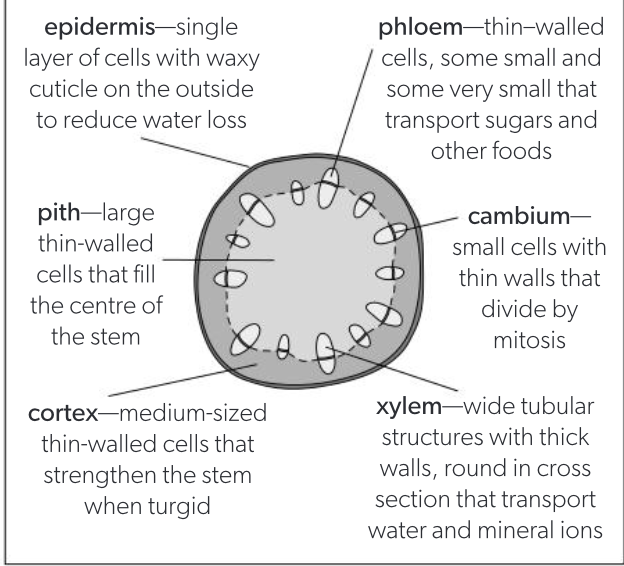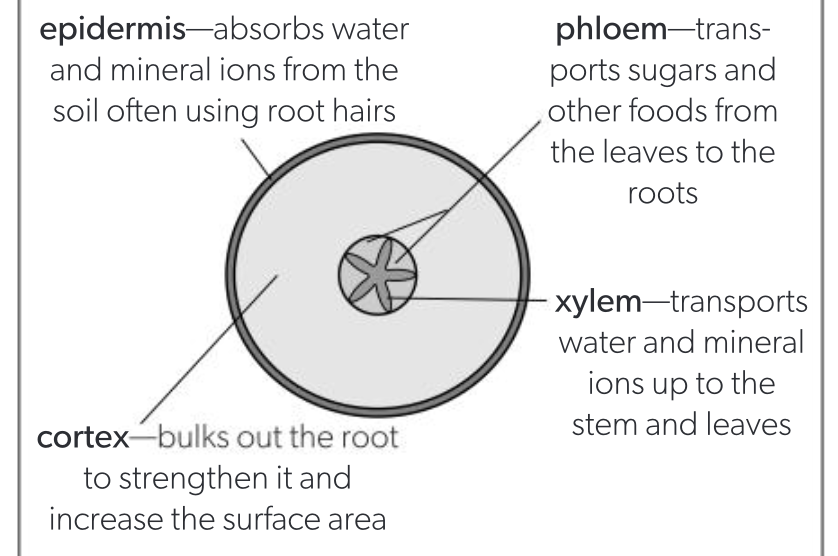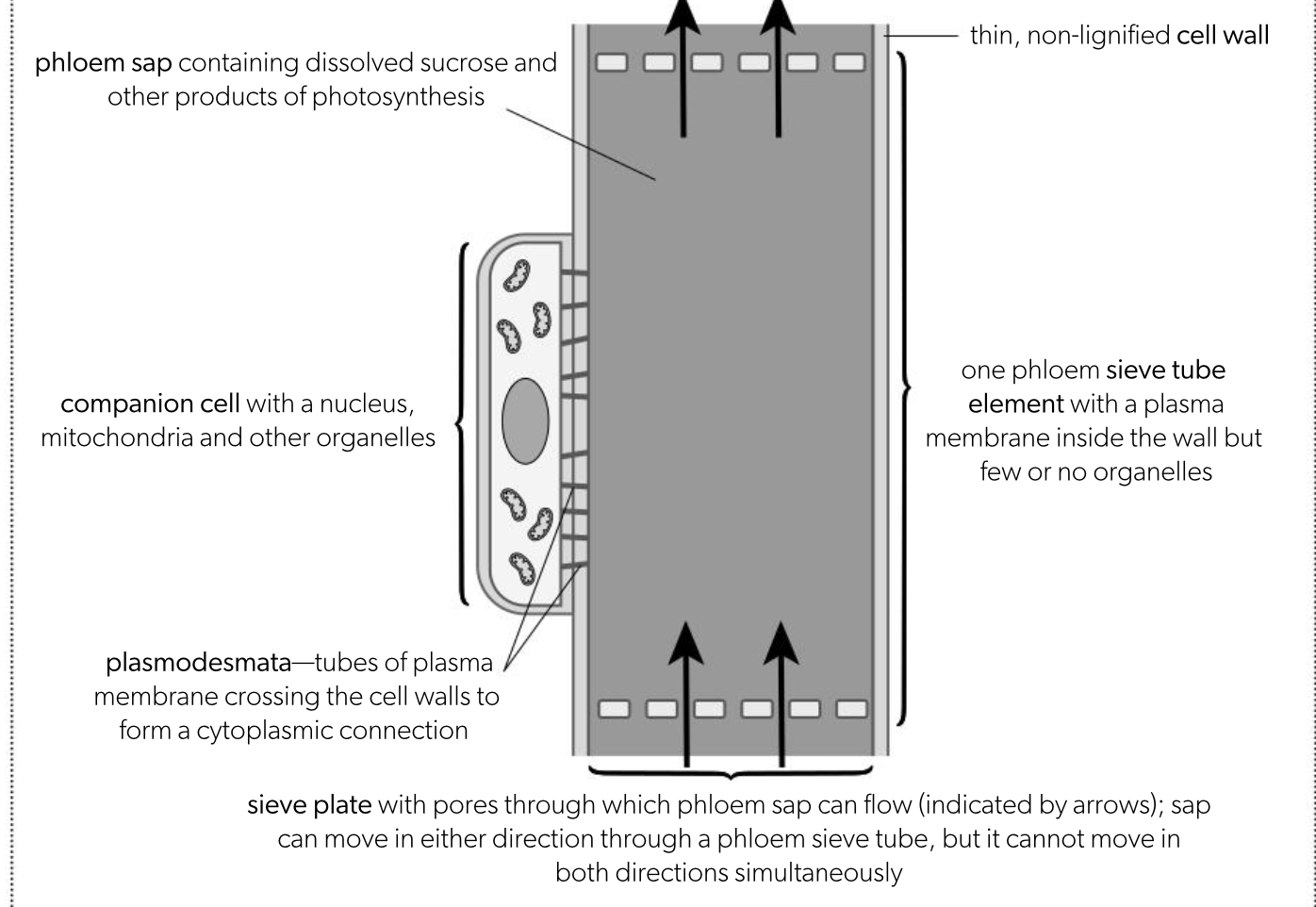Transport in plants
1/7
There's no tags or description
Looks like no tags are added yet.
Name | Mastery | Learn | Test | Matching | Spaced |
|---|
No study sessions yet.
8 Terms
transpiration stream
water evaporates from cell walls inside leaf cell, and water vapour diffuses out through the stomata
cell walls are made of cellulose and are hydrophilic
more water is drawn from nearest xylem vessels to replace water lost by evaporation
happens due to adhesion of water to cellulose, and cohesion between water molecules
this is capillary action
tensions (negative pressure) are generated in xylem vessels when water is drawn out,
due to cohesion between water molecules, tension generated in leaf is transmitted down continuous columns of water in xylem until the roots
this is transpiration pull, allows water to be moved upwards through the plant against force of gravity
adaptations of xylem vessels
lack of end walls and cell contents
creates long, hollow continuous tubes, allowing unimpeded flow of xylem sap
mature xylem vessels are non-living
pits for entry and exit of water
gaps in the thickening of the cell wall through which water can enter and exit
walls thickening and lignin
walls of xylem thickened and lignified
prevents vessels from collapsing when pressure is low during transpiration
dicotyledonous stem structure

dicotyledonous root structure

root pressure in xylem
when a plant is not transpiring (e.g due to high humidity), but needs xylem sap to flow upwards, root pressure mechanism is used
minerals ions are actively transported into the xylem cells, lowering their water potential
this makes xylem sap hypertonic, so water moves in by osmosis
this causes positive pressure potential inside the xylem and pushes the sap upwards, against force of gravity
translocation
phloem tissues are used to translocate carbon compounds from sources to sinks
sources: parts of plant where photosynthesis occurs generating carbon compounds
sinks: part of the plant which need a supply of carbon compounds
adaptations of phloem
companion cells have many pump proteins in their plasma membrane to pump sucrose into their cytoplasm, and many mitochondria to make the ATP needed for active transport
plasmodesmata allow the sucrose-rich sap to flow from companion cell into the sieve tube

process of translocation in phloem sieve tubes
organic compounds (usually sucrose) produced at the source are loaded into sieve tube by active transport by companion cells, using pump proteins in membrane
increases solute conc, (lowers water potential), meaning water moves in by osmosis
this increases the hydrostatic pressure inside the sieve tube
pressure gradient from the source to the sink causes flow
sieve plates have pores through which phloem sap can flow